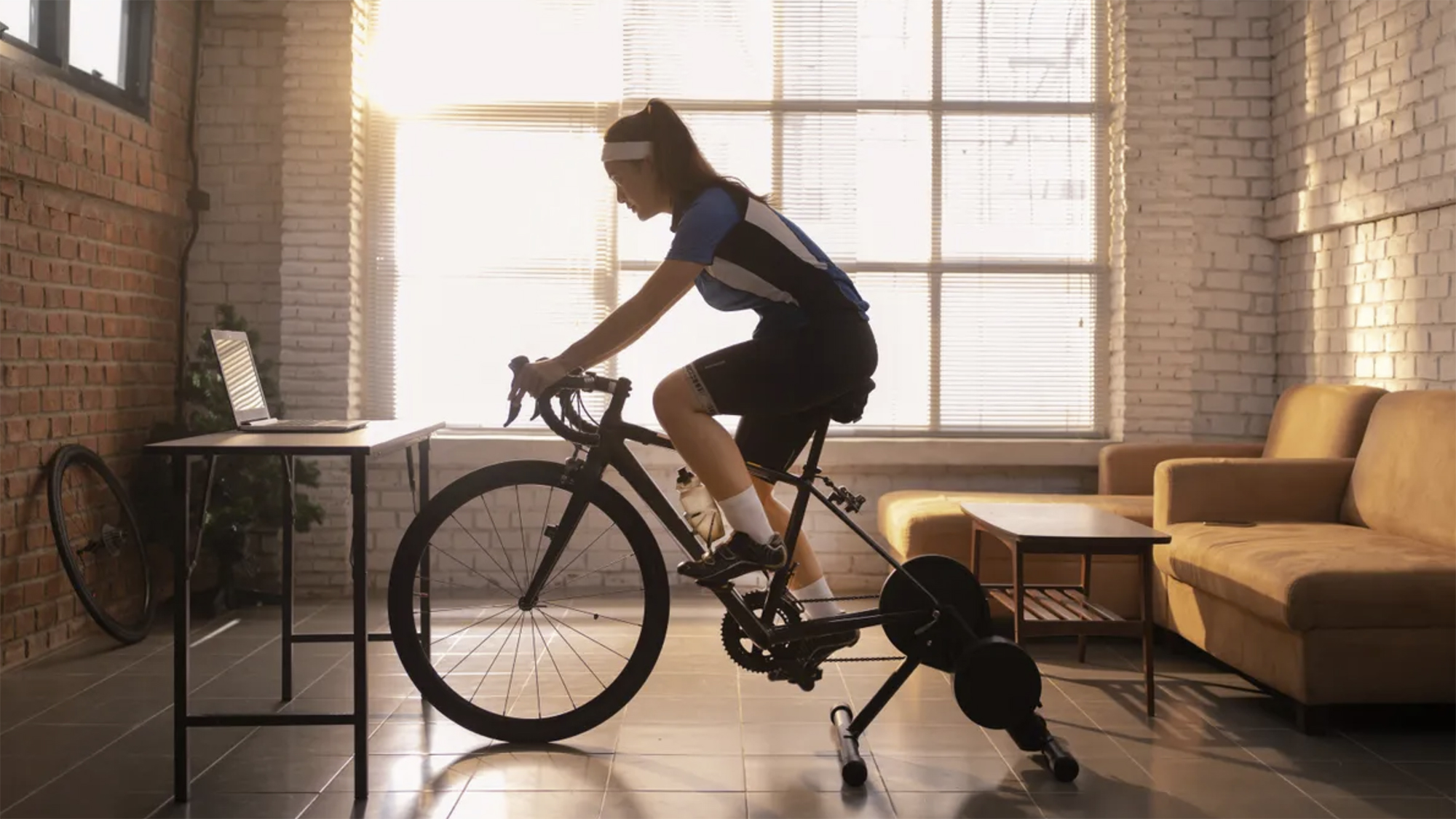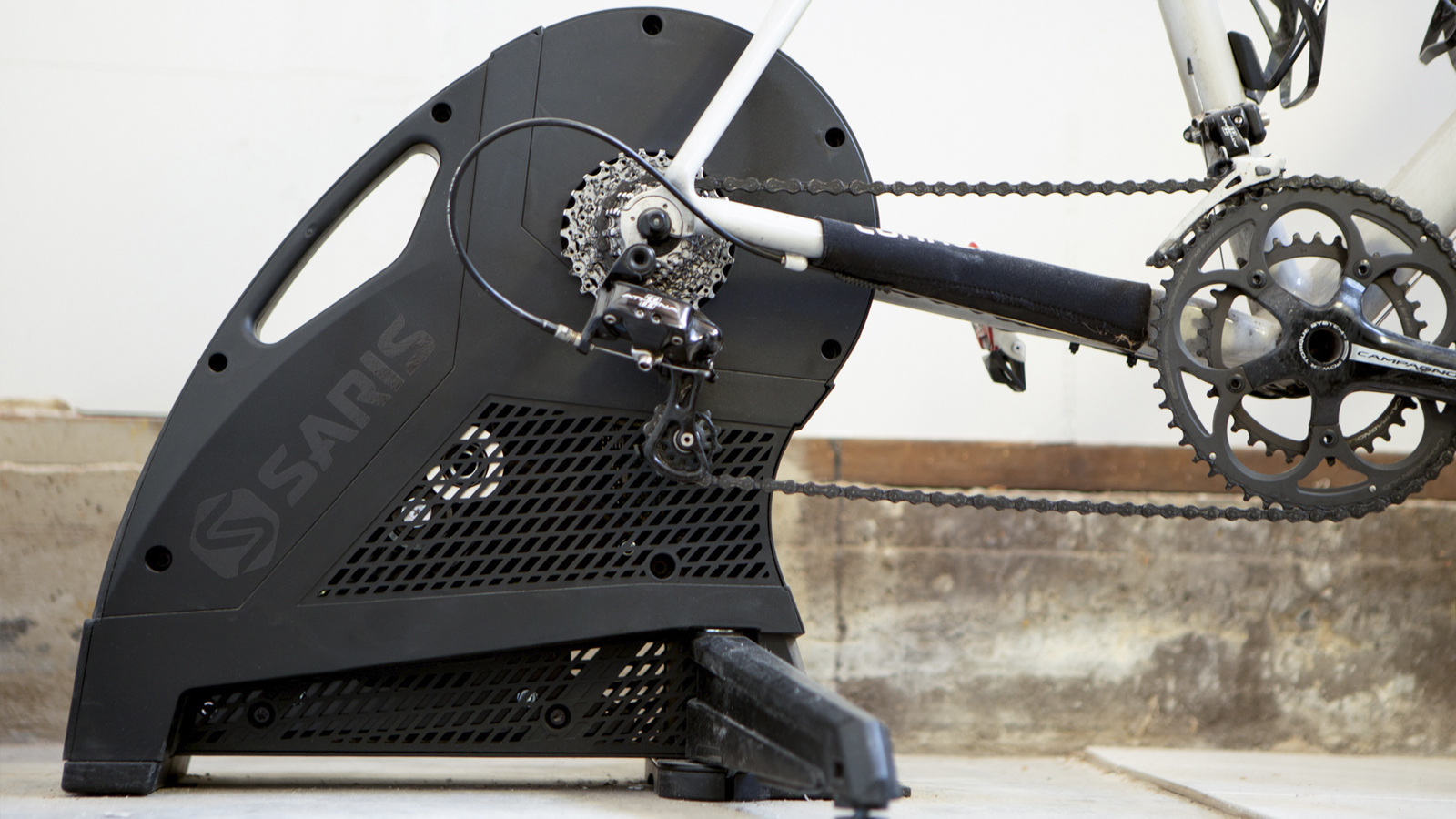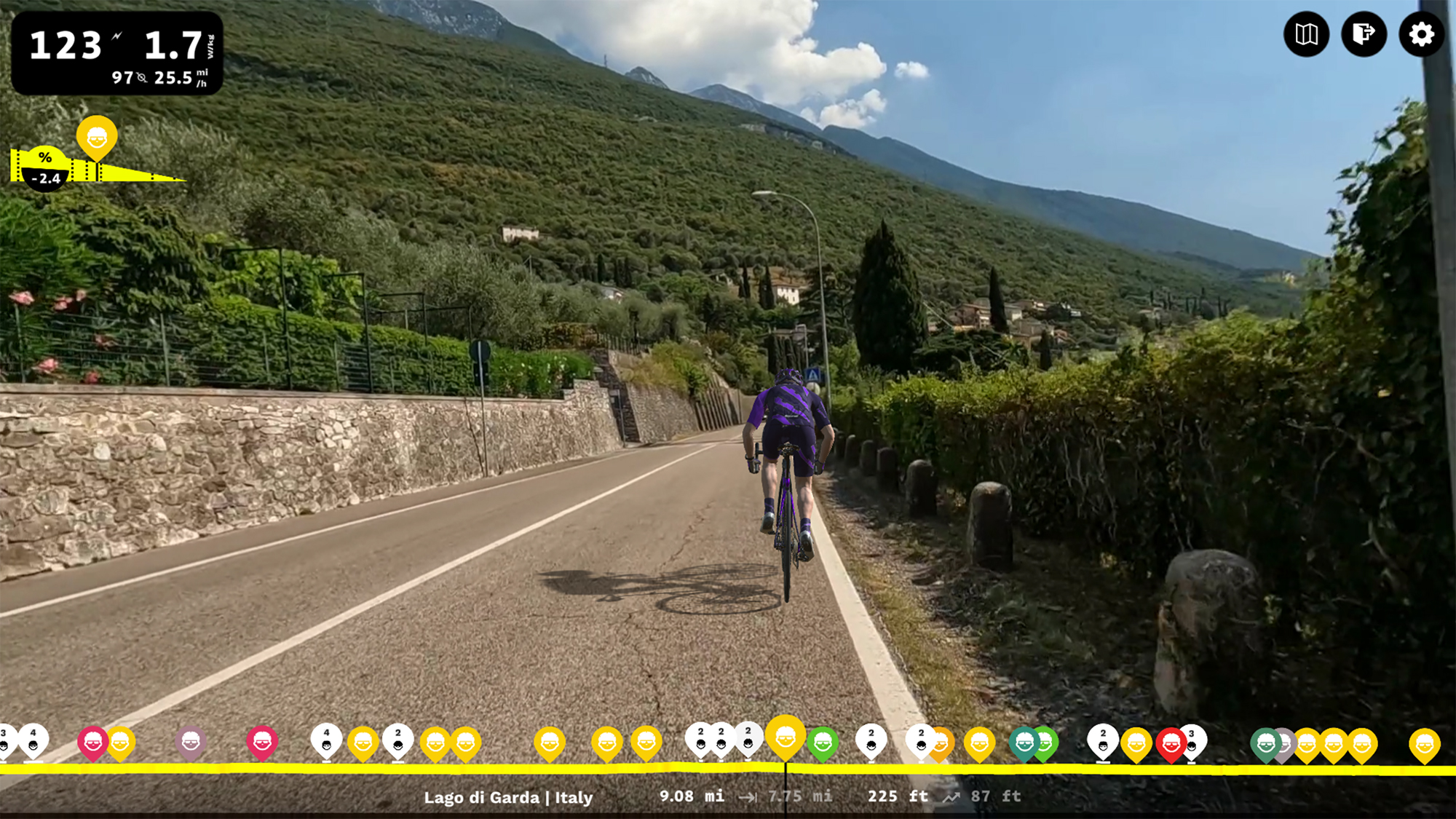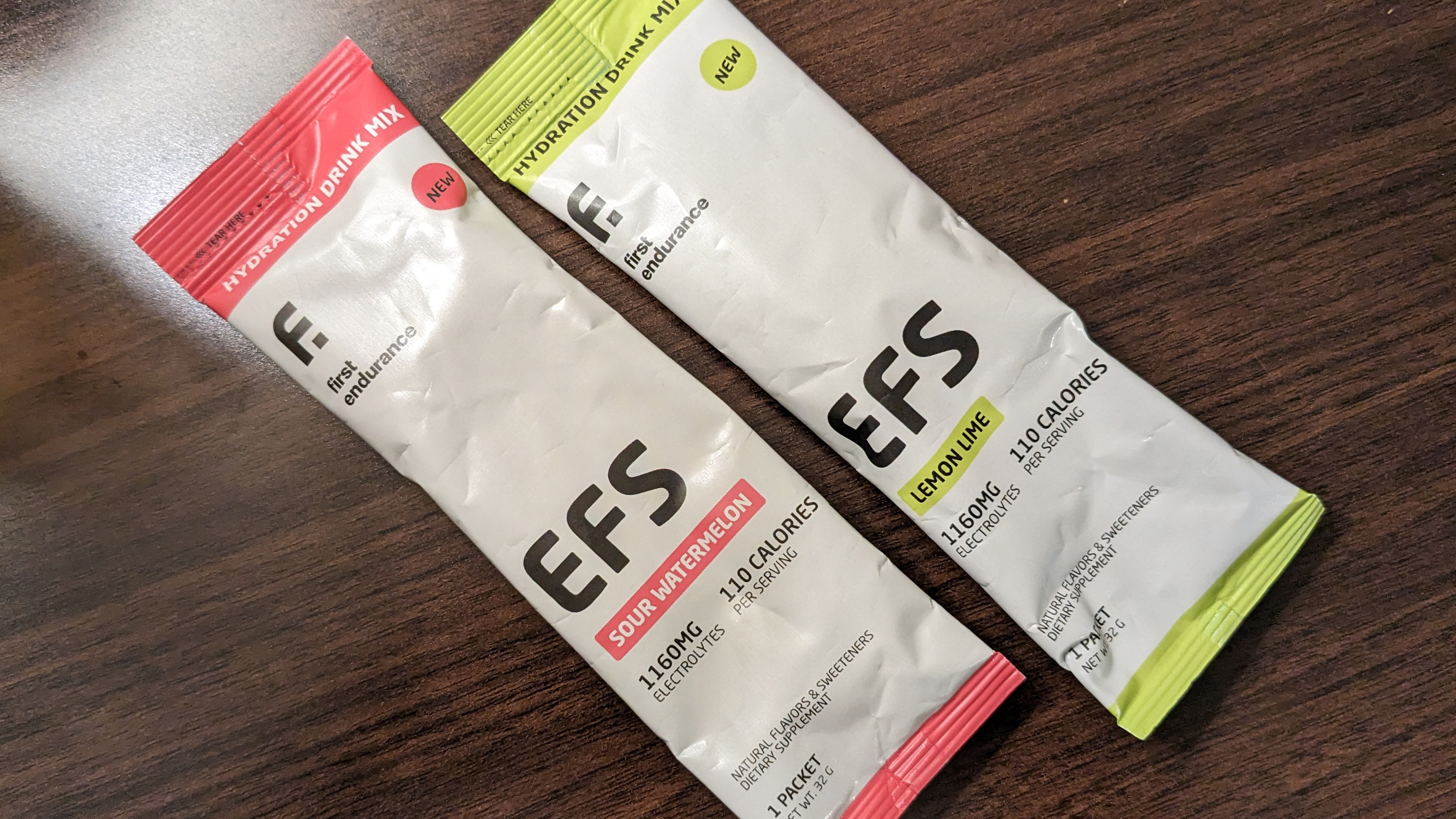
Before smart trainers and quality indoor cycling apps, almost no one chose to ride indoors. If you had base training on the schedule you just went out and rode no matter the weather. If you had intervals you probably had a favourite flat place with low traffic and no traffic lights or you might have a favourite hill. A chosen hill-repeats hill, or one that was simply long enough to do common effort lengths was also something you'd see discussed among cyclists in every area. When winter hit it was either layer-up and bear it, or take a break and switch sports until the weather changed enough to allow outside riding again.
At some point rollers and magnetic trainers gained popularity and at that point, indoor riding was almost a punishment. No one chose to ride indoors unless it was a necessity. You'd look out the window and see the weather then try to mentally calculate what was going to be the lesser of two evils. The question was always, would you rather deal with the cold outside or the boredom inside?
In today's modern world, things have changed. Today we have a collection of the best smart trainers and indoor cycling apps to go with them. When you combine great products like the latest Wahoo Kickr Move and software like Rouvy, you've got a compelling and interesting option for riding indoors. It's no longer torture but is it enough to make you actually choose indoor riding even during the summer when an outdoor ride is calling? Keep reading to see some of the reasons that you might choose to sweat indoors instead of outdoors no matter the weather.

Uncouple your riding from the time of day
This is the place where the health benefits of cycling indoors start for many people. The simple fact is that riding more is a healthy choice for most people and for some the hours in a day are a barrier to entry. For what it's worth, it's also one of the reasons that I personally spend a lot of time riding indoors.
In the past you'd have to think about how to ride within the confines of sunrise and sunset. Of course it's not impossible to ride after dark but fewer people are going to be doing intervals in the dark. That always meant a finite time for training and frequently things like work and family got in the way. Only those who could dedicate daylight hours multiple times a week to intense training had the opportunity to take their cycling past a certain level.
Even for those who could manage creating that time, and space, it was still a hefty commitment. Only the most dedicated are going to get up at dawn and put in the hours to ride before work. More exercise is a good thing for most people and a definite health benefit. By incorporating indoor riding into your repertoire you can make the choice to ride when it works for you vs when life and sunlight match up.
Stay in the house
This is another place where things start for a lot of people. In some ways it feels a little obvious but it's still important to say as it's especially important for anyone taking care of a family. If you have someone at home who needs you there but not necessarily directly engaged, indoor cycling can be a huge boon to your health.
Kids are a great example and certainly something that has come up for me as a primary caregiver. Often kids will be fine on their own when you are in the next room but not when you are hours away on a bike. If you've found yourself held back from doing the riding you want because you can't leave the house, indoor riding is the answer.
You can start getting the exercise you need for a healthier lifestyle without going anywhere. What's really amazing is that with the choices we have in today's indoor riding ecosystem, there's almost no drawback. If you want to do intervals and workouts that's a choice available but there are also plenty of ways to just ride a bike. You can go explore far off places in the world and you never have to leave the house. If your child suddenly needs you, all you have to do is step off your bike and you are at home and in parent mode.
You can even ride with other people without ever leaving the house. For some people that will mean a competitive angle and racing. If that's you then there are opportunities available but you don't have to be competitive to ride with other people. Riding and chatting with friends is a great mental health boost and all you have to do is pick a time, without worrying if it's after dark, then grab a pair of headphones and start riding. You could do workouts together but you could also pick a location somewhere in the world and go explore it on bike all while chatting with a friend in your ear.

Structured training without distractions
One of the biggest health benefits to indoor cycling is simply the ability to ride more. For some people that will mean finishing up your workday and still having time to ride even if it's dark out. For others that will mean riding a bike while staying only a room away while kids sleep safely. Still, even if you can leave the house, and have the time to do it during the day, there are still health benefits to riding indoors.
In the beginning of this article I talked about how cyclists used to have a favourite hill or straight away for doing intervals. The reason is that it's hard to do structured training outside without distractions. Structured training works because the intervals target specific muscle groups or types of riding and hold your body to a specific difficulty long enough to make change. When done outside a traffic light, or errant car, might stop you in the middle of your interval and you've now lost out on benefit. Making sure you hold your intervals, including when it's time to rest, is going to make a stronger cyclist and that's a huge health benefit.
It's also worth noting just how much focus it takes to complete certain intervals. Intense intervals are incredibly hard and you'll often find yourself staring at your bike computer focusing on turning the pedals. Outside that's a dangerous mindset to be in and you might miss something dangerous or be willing to take unsafe risks to complete an interval. Inside you can make use of a smart trainer in ERG mode to hold your power exactly where it should be, then focus on the clock with no need to worry about external dangers. I don't think I need to work all that hard to point out that not having an accident is a huge health benefit to riding indoors. At the same time, the ability to complete highly focused training is also a health benefit.

Learn successful fueling strategies
If you've ever experienced the intense crash in energy that is commonly referred to as a bonk, you'll understand it can be downright dangerous. If you are far from home when you experience a bonk it's hard to focus and hard to pedal. It can be very unsafe but you've got to get home, or at least to a store.
Understanding your body and being able to eat what's appropriate for your riding is a definite health benefit and when you ride indoors, you can feel free to experiment. While it's true that should you need to get off your bike to take care of a child, riding indoors makes it easier, that side effect extends to you as well. When you haven't actually gone anywhere, you can always step off your bike and get food if you get your fuelling strategy wrong.
You are also less likely to get it wrong when you ride indoors. Just like structured training is easier indoors, so is feeding yourself and knowing when to do so. As you ride indoors you essentially have a heads up display at all times and there's no distractions. You can watch your energy output and eat when you need to. You'll be much less likely to have distractions derail your plan. Since the more you practise something the better you'll be, you can practise fuelling indoors so that it's second nature outdoors.
Heat acclimation
So far I've covered the health benefits of indoor cycling in a somewhat roundabout way. When you ride indoors you stay in your house. That makes it easier to ride more because you can still parent, take care of an elderly family member or a pet. It also means you don't have to worry about the sun going down, you can experiment with fueling without a risk of bonking far from home, and you can give intense training your complete focus. There is a more direct outcome as well though.
I recently spent some time doing a deep dive into the effects of indoor riding as it relates to heat. One of the things I found through the use of the Nix bio sensor is that I was sweating almost twice as much indoors. Part of that discussion was also a discussion of the effects of heat acclimation and what that means for cyclists who ride outdoors until it's too cold then move indoors. That discussion led to a connection with a company called The Heat Laboratory based in Sydney Australia.
The Heat Laboratory is "Sydney’s first and only heat acclimation service." The point of which is to help athletes, at all levels, as well as "anyone who is keen to change up their endurance training or looking for a new challenge that can improve their physiology" through heat acclimation. Though the brand was quick to point out that "indoor training in normal ambient conditions 18-25ºC is quite unlikely to produce full adaptations" the brand did say "one will certainly get more HA indoors than riding outdoors." Which of course leads to a direct line between a health benefit of indoor cycling through heat adaptation. When I specifically asked about the health benefits of indoor cycling though, I got more info on an angle I'd never considered.
What The Heat Laboratory pointed out was that in "the context of our warming world, and increasing heat tolerance in a global population exposed to more extreme environments, having well-developed sweat glands later on in life" is important. This is because "the only way we can cool ourselves when ambient temperatures exceed skin temperature (~35 degrees C / 95 degrees F) is through the evaporation of sweat. However, the ability to sweat declines as we age through declining usage of those sweat glands." The company went on to talk about how "exercising indoors will confer similar, if not, better adaptations and defend health in a warming environment by improving and maintaining the sweating response as well as all the traditional benefits of exercise and defend human health as we age in a warming world."
In other words, not only do you get all the secondary health benefits associated with lower barriers to entry for more cycling and safety of being stationary, but there are also direct benefits. We all enjoy riding outdoors but there are psychological and physical health benefits that come with cycling indoors. If you always thought it wasn't for you, there are new technologies and new equipment that make it more exciting and engaging than ever before. Give it a shot this winter and perhaps continue including it next summer as well.







